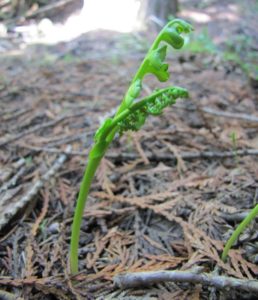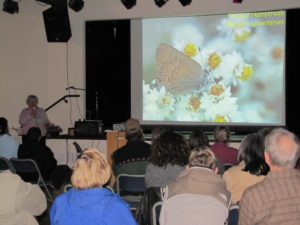Trashion Show 2013
OHA hosted Tonasket’s first ever “Trashion Show” at the Community Cultural Center as a fundraiser in 2013. Today, the annual April event is coordinated by the Green Okanogan recycling center.
OHA hosted Tonasket’s first ever “Trashion Show” at the Community Cultural Center as a fundraiser in 2013. Today, the annual April event is coordinated by the Green Okanogan recycling center.
John Crandall came to Highland Wonders to discuss water quality and its importance in our lives. John shared the story of water quality protection in the United States, including the role of the Clean Water Act – what it does and what it means for our water. Drawing on his extensive experience in monitoring water quality, John provided an overview of the characteristics of water that are most commonly analyzed, and why. He discussed important local issues such the relationship between water temperature and fish survival, and the impact of pesticide use in our waterways. The effects of beavers, as well as wetlands, on water quality were also discussed.
Pollinating insects have a big job, helping plants produce fruit not only in gardens and orchards, but also among many native species like wild strawberries, huckleberries, thimbleberries, wax currants, and others that require pollination to reproduce. Dr. Bob Gillespie is helping keep track of our native pollinators, making observations and assessing how well they are functioning. On Friday, March 1st, Bob came to Highland Wonders to share about the surprising diversity of species pollinating the native plants in our region.
On Friday, Feb 1st, 2013, Dr. Michael Schroeder brought his wealth of experience with, “Grouse of the Okanogan.” We learned that Okanogan County is home to seven species of grouse, more than any other county in the US. Okanogan County is home to: Sage Grouse, White-Tailed Ptarmigan, Sharp-Tailed Grouse, Spruce Grouse, Ruffed Grouse, Dusky Grouse, and Sooty Grouse. There are 12 species in total across the United States.
On Friday, January 4th, 2013, Dr. Scott Ford, avian medicine and surgery specialist, shared information about local loons. Their biology and conservation were discussed, along with stunning images taken by Dan Poleschook and Ginger Gumm, local professional photographers. Dr. Ford discussed where our loons go in the winter, and provided updates on telemetry technology that will allow researchers to better track individual loons from our area in the coming years.

On Friday, November 2nd, 2012, Dana Visalli opened OHA’s third indoor educational series with an engaging talk on “Highland Wildflowers: Their Beauty and Their Biology.”
OHA’s 2012 outdoor Highland Wonders season closed with an all day tour, “Geology of the Okanogan Highlands,” led by Steve Box (USGS), Ralph Dawes (WVC), and Cheryl Dawes (B.S. Geological Sciences). Transported by a school bus, community members stopped in several locations along a loop that spanned the Republic and Toroda Grabens as well as the Okanogan Metamorphic Core Complex. From pictographs to garnets, and from volcanic/granitic faults to the highly unusual Corkscrew Mountain, the group considered a diverse array of features that shape the landscape as we know it.
The July “Magic of Wetlands” habitat tour was led by George Wooten, Bob Gillespie, and Kathleen Johnson, who together created a window into the special roles and adaptations of wetland plants, insects, and birds, respectively.

On July 7, 2012, local botanist George Thornton lead a group of community members into a seldom seen Western Red Cedar ecosystem near Chesaw, WA. Mr. Thornton opened the first Highland Wonders series in November 2010 by sharing his knowledge and photos of unique and rarely seen Okanogan Highland plants; in the summer of 2011, he led a walk along the wetland fringe and woods at Lost Lake, and 2012 brought this opportunity to learn more about Okanogan County’s remnant cedar populations. A group of community members ventured Northeast of Buckhorn Mountain, where an extraordinary ecosystem thrives because of the shade, stable soils, organic matter and habitat provided by the Western Red Cedar.

On Friday, May 4th, Idie Ulsh provided a window into the life of butterflies, with “Wings of Beauty,” a fast moving, fun program on butterflies.